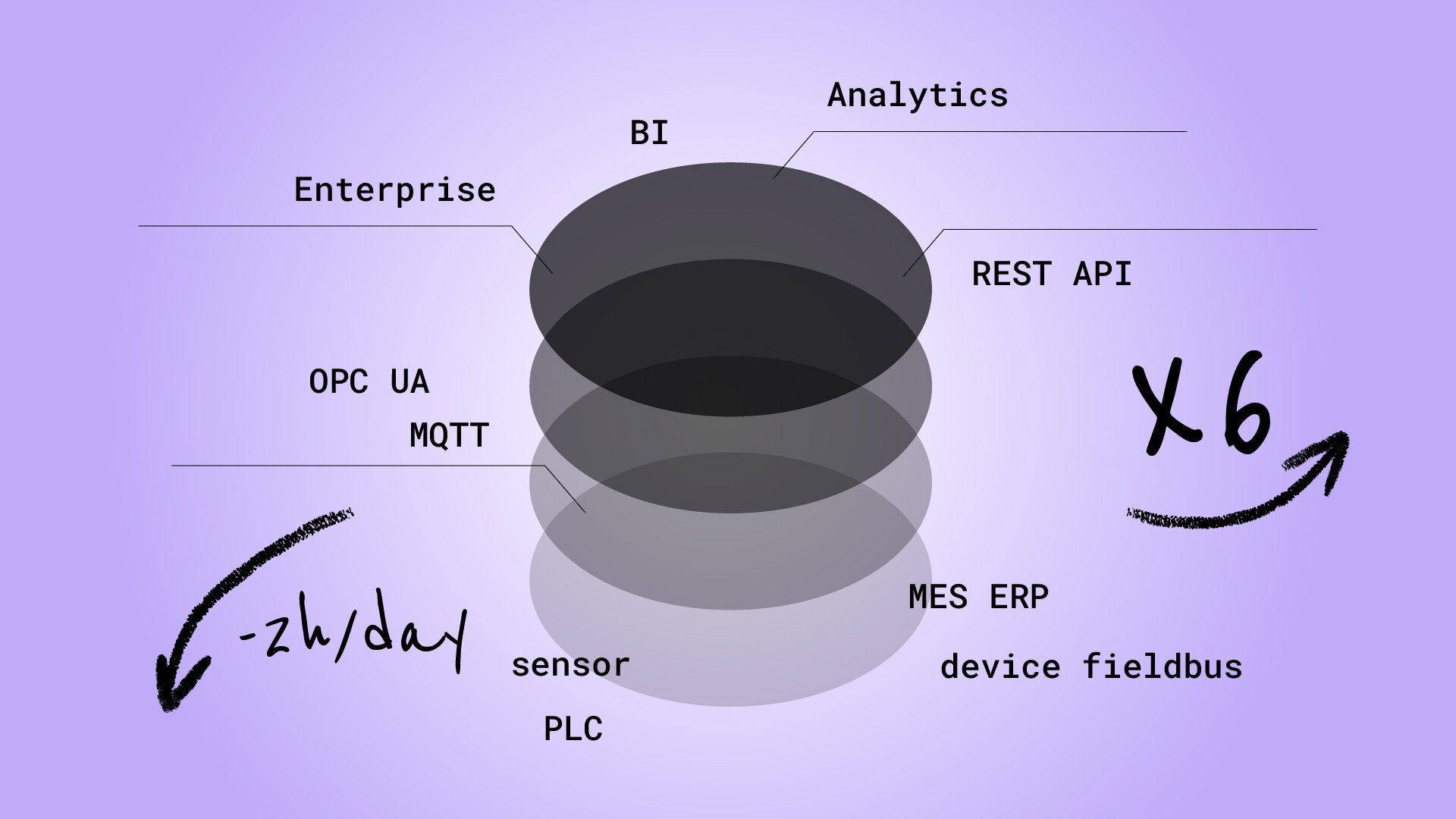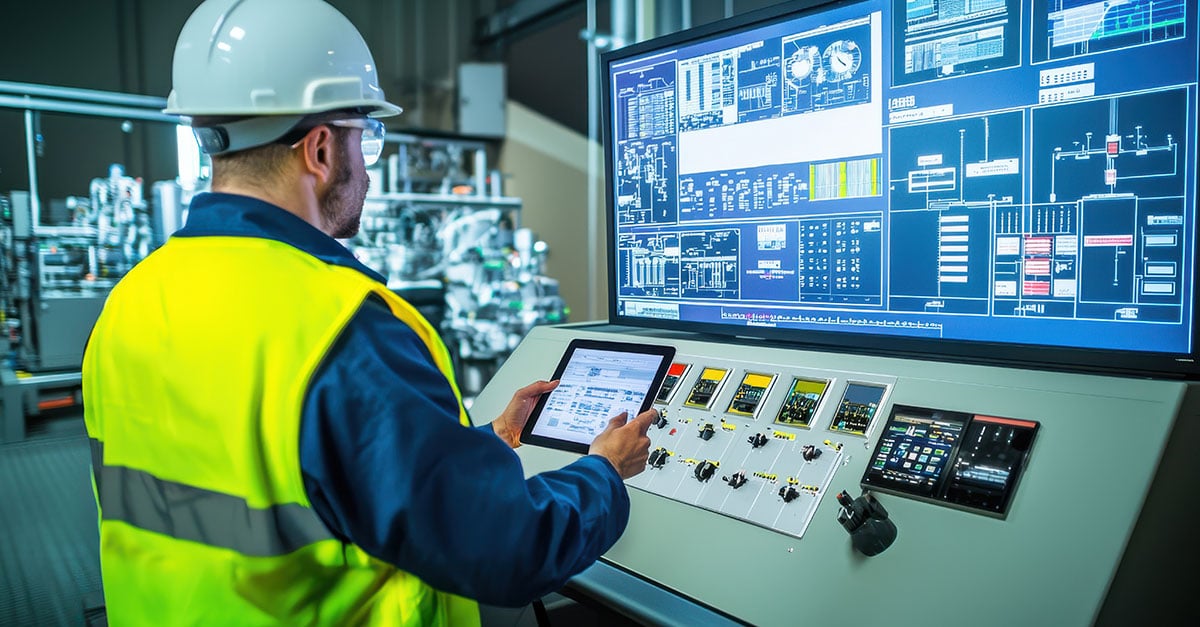
Intelligent edge computing for your business
 Intelligent edge technology can offer companies the ability to make decisions based on real-time data without the need to send it to a central platform.
Intelligent edge technology can offer companies the ability to make decisions based on real-time data without the need to send it to a central platform.
This can result in time and money savings and a substantial contribution to security, as data can be processed locally without the need to transmit it to a remote platform. The use of the intelligent edge can therefore be particularly useful in contexts where latency is an issue, such as in industrial control or process automation applications.
Reducing processing time is possible
The use of Intelligent Edge technology can greatly improve business efficiency through increased processing power. As opposed to sending data to a data center or third party, analysis is performed directly at the point of data origin. This not only reduces processing time, but, also enables companies, the risk of data interception or breach.
The first step: is proper implementation
To achieve effective implementation of edge computing, IT administrators must make a proper assessment of the characteristics of IoT devices, in terms of performance, processing capacity, connectivity and security requirements. Based on these considerations, and the amount of data to be collected, they must then decide the best way to aggregate and manage these devices, through the use of perimeter servers and connected cloud platforms.
In addition, one must consider how to manage the data and how to protect it from cybersecurity threats, using technologies such as encryption, authentication, and role-based access. In conclusion, edge computing is a technology that enables enterprises to efficiently manage applications and data across multiple IoT devices, providing high performance while reducing operational costs and improving data security.
Why intelligent edge computing?
The intelligent edge is concerned with managing and solving various problems in the Internet of Things (IoT). The system architecture involves the use of dedicated servers and proximity to capture, aggregate and analyze data from all IoT devices.
The cloud platform consists of a virtualized mix of scalable processing, storage, and network elements that support various workloads. However, IoT devices work outside the cloud and are aggregated and assigned to physical edge servers that capture and perform analysis, even initiating some events. The edge servers, if necessary, send data to the cloud for further evaluation and may receive requests from the cloud for data delivery as needed.
In this way, the data generated by IoT devices is largely separated from the main data loads in the cloud. In summary, edge servers create environments where only important data is sent to the main data network, helping to reduce network congestion, latency, and data management costs.
How to maximize results?
To get the most out of the intelligent edge, it's crucial to plan carefully from the ground up. First, it's important to understand that edge computing isn't just about adding smart devices incrementally to a platform. To successfully combine IoT and edge computing, you need to understand the complexity of a mix of physical and virtual environments that include proprietary and third-party systems. Experts suggest some guidelines to understand how to configure an optimal intelligent edge divided into 5 points.
- Choose the entity of intelligence to integrate into your IoT devices;
The more intelligence built into each IoT device, the less processing power will be needed at the edge servers. Standardized IoT devices equipped with their intelligence can autonomously process a part of the information, generating smaller quantities of data in easier-to-manage formats.
However, the use of smart IoT devices involves higher costs and therefore it is important to carefully evaluate the selection and selection criteria from the beginning. According to experts, while the additional cost per IoT device is relatively low, purchasing small amounts of intelligence per device can result in a high overall cost, which could be better spent on intelligent edge system design.
- Choose how to group your IoT devices;
Beyond cost, it's important to consider that a diverse grouping of smart IoT devices is easier to manage than a collection of relatively fewer smart devices. In fact, with smart devices, there is less need to manage filters, analyzes and reports on data flows.
However, it is not recommended to group all similar IoT devices on a single network via an edge device, as this would result in huge data transfers on the latter. The intelligent edge approach involves grouping data-creating devices into manageable areas and ingesting data as close to the group of smart objects as possible, to minimize data traffic at a cross-platform scale.
The best approach is to group devices by proximity, rather than capabilities. Proximity grouping reduces latency and allows for faster response to identified events. This implies that the Edge Server needs to be smarter, as it will have to handle different data streams reporting different events.
- Carefully define the desired results in a precise and detailed way;
It is not recommended to use edge systems to fully manage IoT devices, carving out certain areas of a platform. A high reading on an IoT device, monitored through one Edge Server, might be meaningless, but compared to similar devices monitored through all Edge Servers, it might be incredibly important.
Therefore, it is essential to define real exceptions and study how to handle them. This requires maintaining a good rules engine, and updating it regularly to understand how priorities and needs change. In addition, it is important to have a complete, real-time inventory to ensure that edge servers are performing optimally in the real environment, avoiding referencing legacy settings that may no longer be appropriate.
- Adopt a star approach to system planning and design;
To handle the huge flow of data generated by IoT devices, it is necessary to have an edge infrastructure made up of several edge servers located on a hierarchical network. The optimal methodology is to use less expensive and less intelligent edge servers located as close to the IoT devices as possible.
When these servers detect events of interest, they send the relevant data to a smarter central server, which manages all edge servers. The central server applies more intelligence to data analysis to decide the most appropriate actions. It is important for edge servers to operate in a two-sided fashion, i.e. they can identify events and send data to the center, but also receive real-time data requests from the center.
For example, if an Edge Server detects a high-temperature situation, it sends that event to the central server, which requests readings from all appropriate temperature monitors. If all readings are within limits, the problem is local, otherwise, system-level intervention may be required.
The hub-and-spoke model reduces the time it takes to analyze the data, as the central server only needs to handle high-priority data.
However, it is important to maintain a good rules engine to define real exceptions and study how they should be handled, updating the inventory in real-time to ensure Edge Servers are running effectively. Also, you should group devices by proximity rather than the capacity to reduce latency and enable faster response to events.
- Use advanced analysis and reporting tools for data processing;
Even though automation has made significant progress, it cannot guarantee 100% accuracy. Currently, Edge Servers are most likely unable to take corrective action themselves, so they will still need to report the activity to a human operator. To avoid false positives and false negatives, it's important to invest in high-quality analytics tools that produce clear and meaningful reporting. In this way, possible intervention solutions can be shown to a manager and informed decisions can be made to better manage the IoT system.
In conclusion
Edge intelligence technology is increasingly popular in enterprises due to its multiple benefits. First, it allows data to be processed directly on the IoT device without having to transfer all the information flow to a central server. This means that the load on the network is reduced and resource utilization is optimized.
In addition, edge intelligence allows for real-time analysis, enabling immediate response to any problems or critical situations. This is especially important in industries like manufacturing, where timely decisions can be the difference between success and failure.
Another benefit of edge intelligence is increased data security. Since the data is processed locally, the risk of security breaches is reduced, as there is no need to transmit sensitive information across the network.
Edge intelligence enables greater autonomy of IoT devices, reducing the dependence on a constant connection with the central server. This means that the devices can continue to function even in the event of connection interruptions, ensuring continuity of service.
Within this architecture, the Industrial IoT Platform plays a fundamental role in the Intelligent Edge, as it allows the collection, processing and analysis of data from IoT devices distributed in remote or local environments: the choice of a correct and solid IoT platform is central to the Intelligent Edge, as it allows you to efficiently and securely manage data from distributed IoT devices, ensuring fast and reliable processing to support real-time business decisions.



